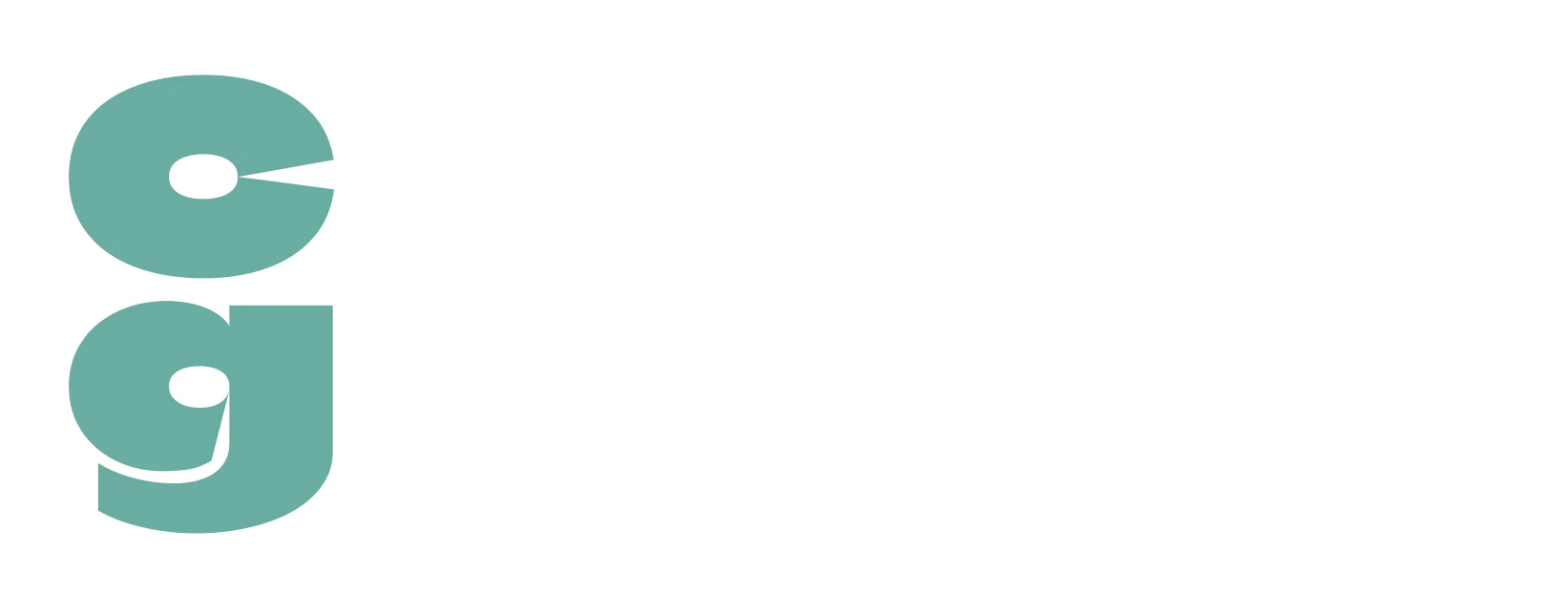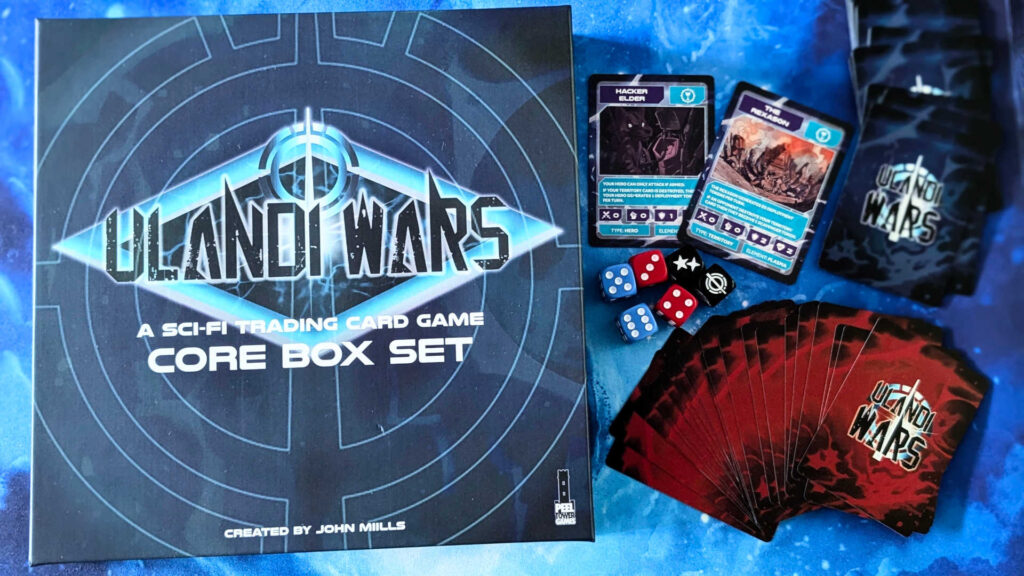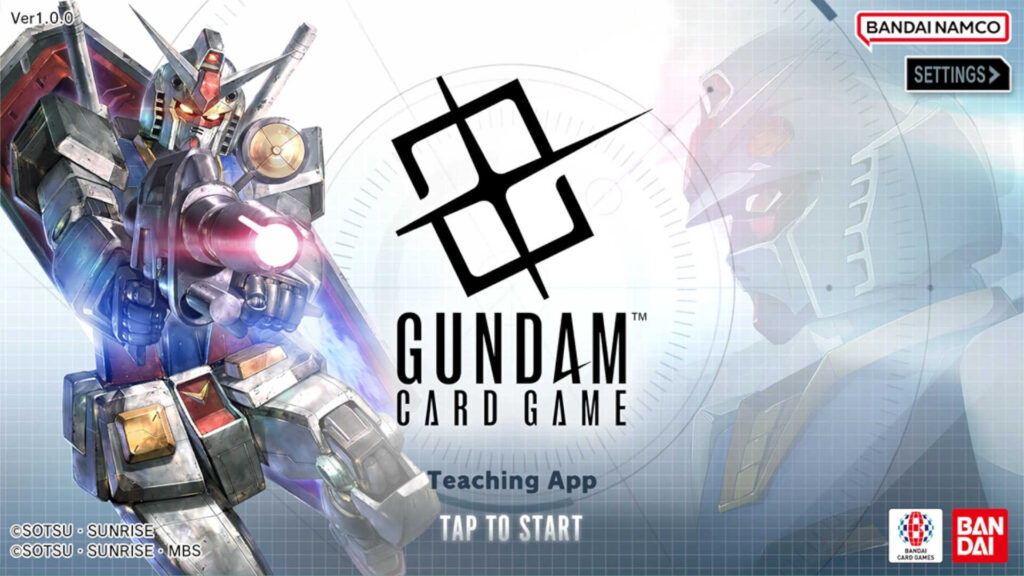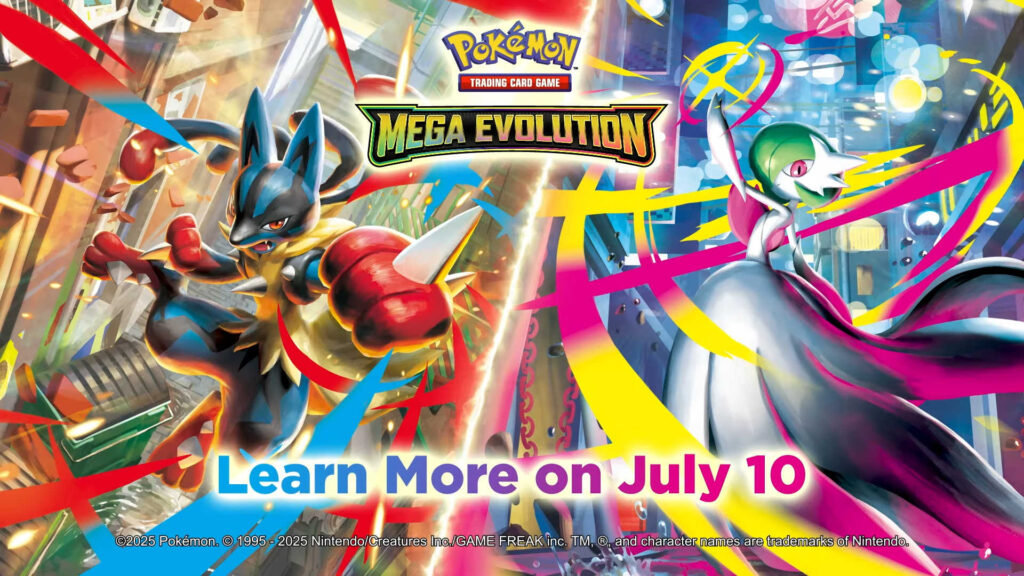When Magic: The Gathering launched, way back in 1993, it’s fair to say that it was quite the phenomenon. In fact, it changed the entire card gaming industry forever; without it, websites like the one you’re reading right not wouldn’t exist, and games such as Pokemon, Yu-Gi-Oh, Disney Lorcana and countless others would certainly not be here in the same form they are today.
As the world’s first collectible card game (or CCG), it transformed the way that players could interact with a game, making the act of constructing a personal deck of cards (deck building) an enjoyable and compelling aspect of the game in its own right.
Part of the deck building experience was making use of the cards you had in your collection, working with what you had to build the best deck you could from whatever you had access to. Of course these days, it is much easier to pick up the individual cards that you want or need from the secondary market on sites such as eBay, TCG Player or Cardmarket, but buying single cards was much more difficult back in the early 90s.
So you were restricted to what cards you’d find in a booster pack; the same is true nowadays if you play draft or sealed formats of Magic, which can be thrilling, unpredictable and have a much more level playing field.
Booster packs will always contain a variety of cards at different rarity levels, but how do you tell what rarity a card is, and what can you expect from each different rarity type? How many will you typically find in a normal booster pack?
Let’s find out, as we check out Magic: The Gathering card rarities!
Table of Contents
Toggle1. Common Cards – Black/White Symbol, Rarity Code C
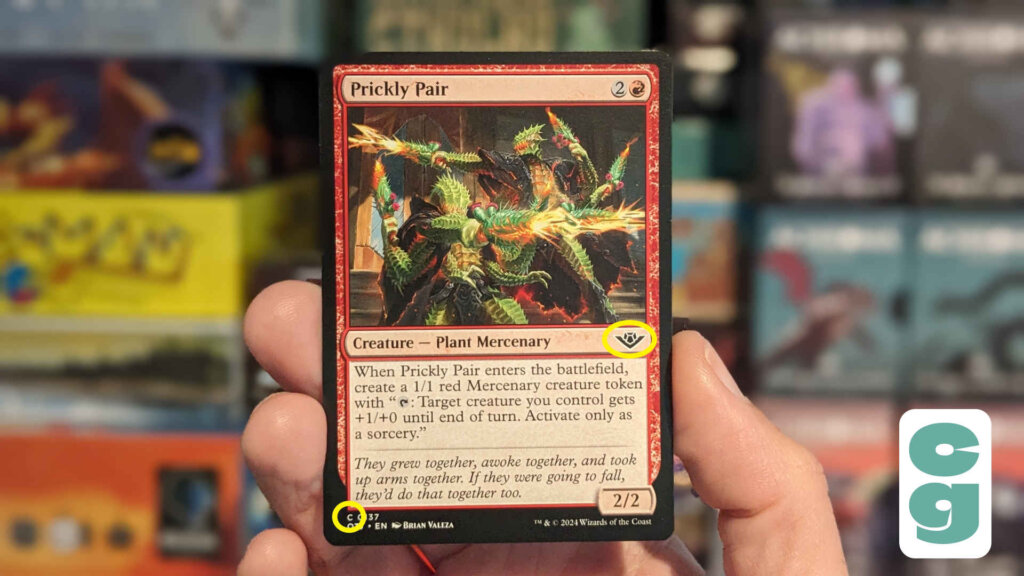
There are a few ways to check a Magic: The Gathering card’s rarity level; there’s a coloured set symbol (the location of which will be different if you have a full art card, but it usually appears just below the card art on the right side), and there’s also a letter code, which you’ll find at the left bottom edge, next to the card’s set number.
In the case of Common cards, you’ll see the unique set symbol, which lets you know what set your card is from, in black and/or white. The card rarity code will be C for Common. For clarity, I’ve circled both the set symbol, and the card’s C code, in the photo above.
Common cards are found at the rate of at least 6 cards in every Play Booster, which is the current ‘standard’ booster pack type that you’ll find on sale.
Though Common cards are, by their very nature, ones that you may well see in many decks, they tend to be lower in terms of power level, whether they’re creatures or other types of spell, but will often be included in a deck as useful cards to get into play quickly, with straightforward, simple effects that can be utilised over the course of a game of MTG.
2. Uncommon Cards – Silver/Grey Symbol, Rarity Code U
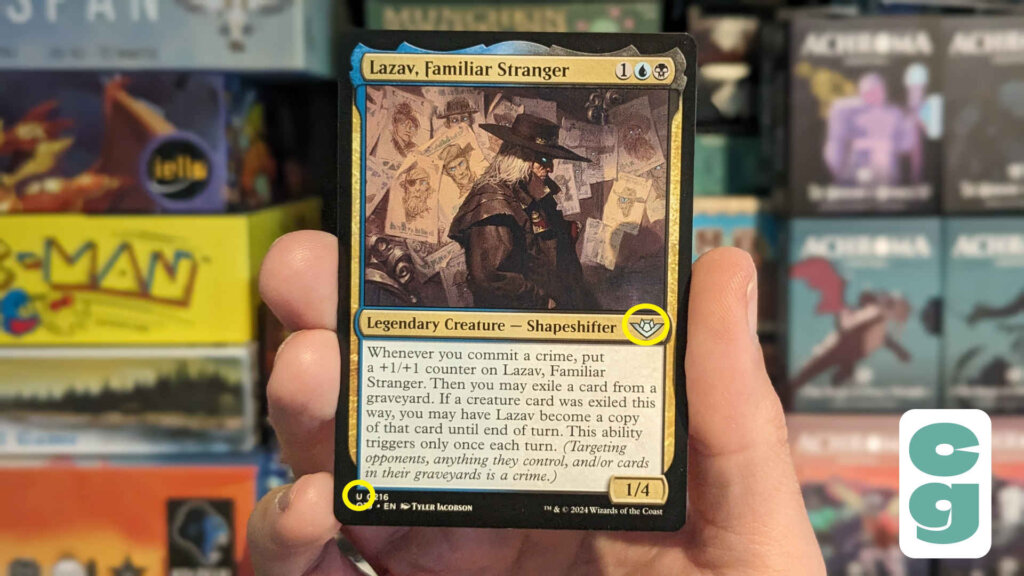
Looking in the same places as you would for a Common card’s symbol and rarity code, you’ll see that Uncommon cards have a silver or grey symbol, and a U as the code at the bottom of the card. Once more, these are circled in yellow so you can spot them without any difficulty!
You’ll find at least 3 Uncommon cards in a Play Booster pack; though these won’t be earth-shatteringly powerful cards, Uncommons will tend to be the backbone of most strategies and combos you’ll see in a deck, given that they’re more readily available than the rarer cards and more powerful, in general, than Commons.
3. Rare Cards – Gold/Yellow Symbol, Rarity Code R
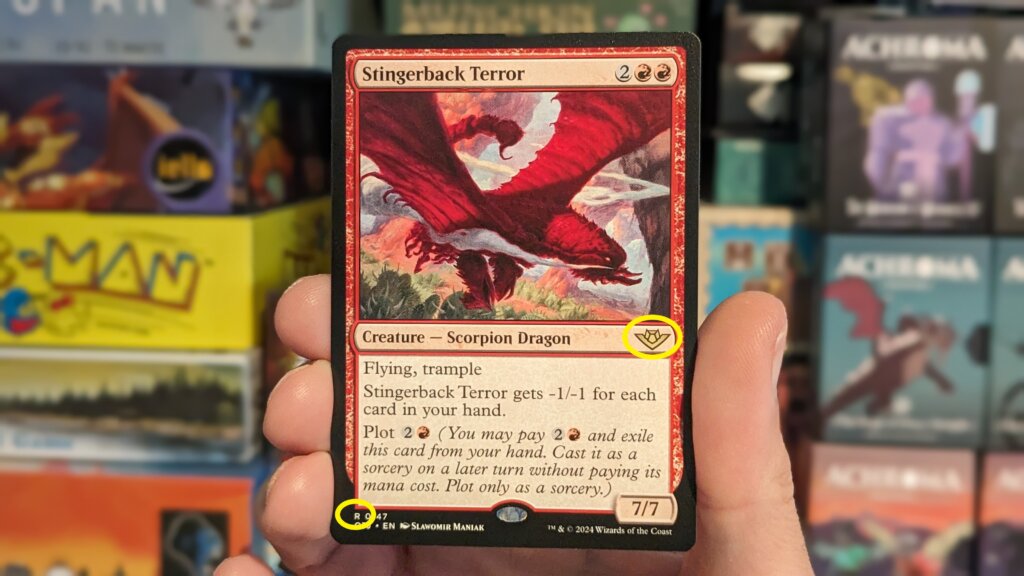
As you’ll typically only find a single Rare in a Play Booster, they tend to be among the most powerful cards in a set. The set symbol for a Rare card will be gold (though it may look slightly yellow in appearance, depending on the age and set the card is from).
The rarity code, unsurprisingly, is an R; this is located in the usual place, at the bottom left of an MTG card; I’ve made sure to circle both the symbol and rarity code in yellow again.
4. Mythic Rare Cards – Bronze/Orange Symbol, Rarity Code M
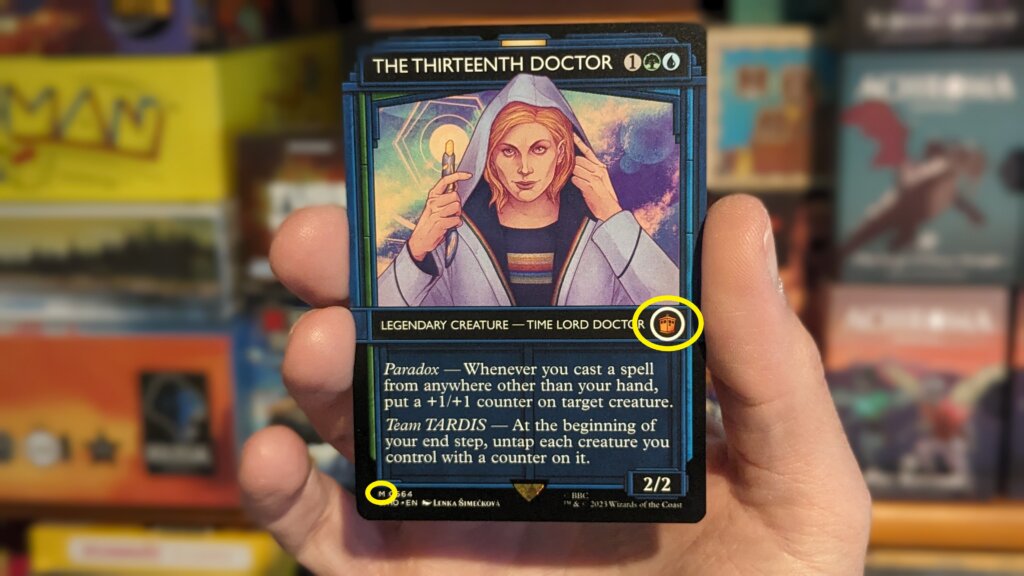
When Magic: The Gathering first launched, there were, generally, only three levels of rarity in a set: Common, Uncommon and Rare. Introduced in the game-changing, groundbreaking Shards of Alara set in 2008, Mythic Rare cards have been a staple of MTG ever since.
At the Mythic Rare level of rarity, you’ll find the most powerful, impactful cards in any given set. In a Play Booster, you’ll typically only find a Mythic Rare at the rate of 1 in every 8 packs, or thereabouts (this pull rate can vary depending on the set).
You’ll see the set symbol in bronze or dark orange on a Mythic Rare, with the rarity code being marked as M at the bottom of the card.
Of course, with the general scarcity and power levels of Mythic Rare cards in booster packs, the original intention was that these would be seen very little in decks. However, as the secondary market has made single cards more available regardless of physical location, you’ll often see players, particularly at the competitive or professional level, using multiple copies of Mythic Rare cards in their decks.
5. Basic Land Cards – Black/White Symbol, Rarity Code L
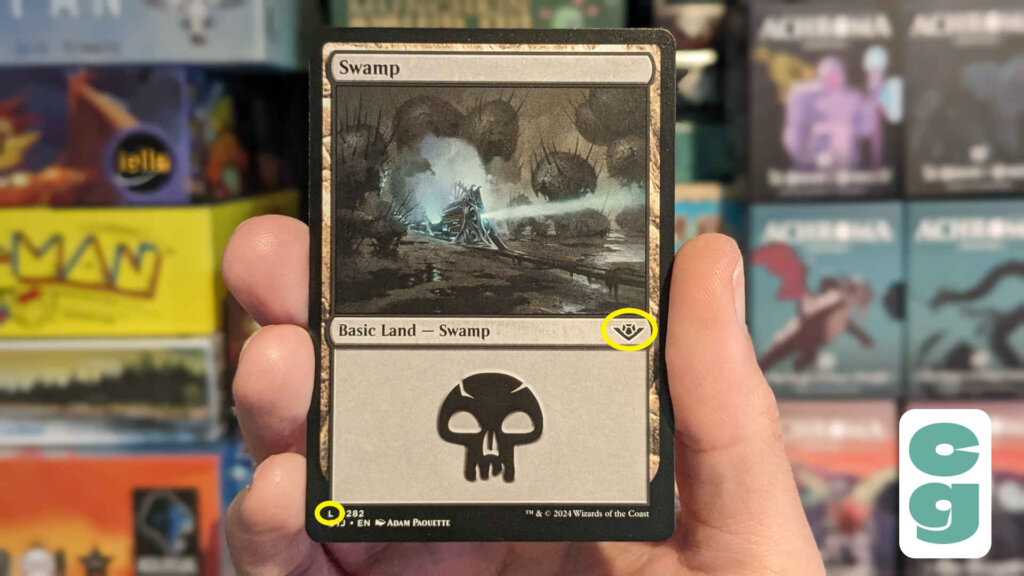
With Land cards being a vital component of a deck, they’re not classified by rarity in the same way that normal spell and creature cards are. That is, unless they’re not Basic Land cards, in which case they’ll follow the C, U, R and M classification as with other cards.
Basic Land cards are easily identified as they don’t just have a black and white symbol, along with the L classification, but their rule boxes will be devoid of text and just feature a large version of the symbol that represents the mana they provide. As you can see above, this particular card shows a black skull as it’s a Swamp card, but you’ll see a white sun symbol on Plains, a blue water droplet for Islands, red fire for Mountains and a green tree for Forests.
All of this makes Land cards among the easiest cards to identify in Magic: The Gathering overall.
6. Token Cards – Black/White Symbol, Rarity Code T

Some creatures or other spells can create new artifacts or more creatures; these are known as Tokens. Though quite often, players may keep track of these with whatever they have to hand, you’ll find Token cards in Booster Packs and just like any other card, they can be purchased as singles via eBay or other sites such as Total Cards.
Token cards will rarely feature much text; they’ll tend to be extended or full art, with the name and type of the creature or artifact, along with its Power and Toughness levels. The card above is a Token Artifact, which can be tapped and sacrificed in order to add 1 mana of any color on your turn.
Note that tokens are never built into your deck; they’re always brought into play by other cards that will specify exactly what type of Token they produce. A black and white set symbol, along with the T rarity code, also makes them straightforward to identify, as you can see from the circled areas above.
7. Promo Cards – Various Colour Symbols, Rarity Code P
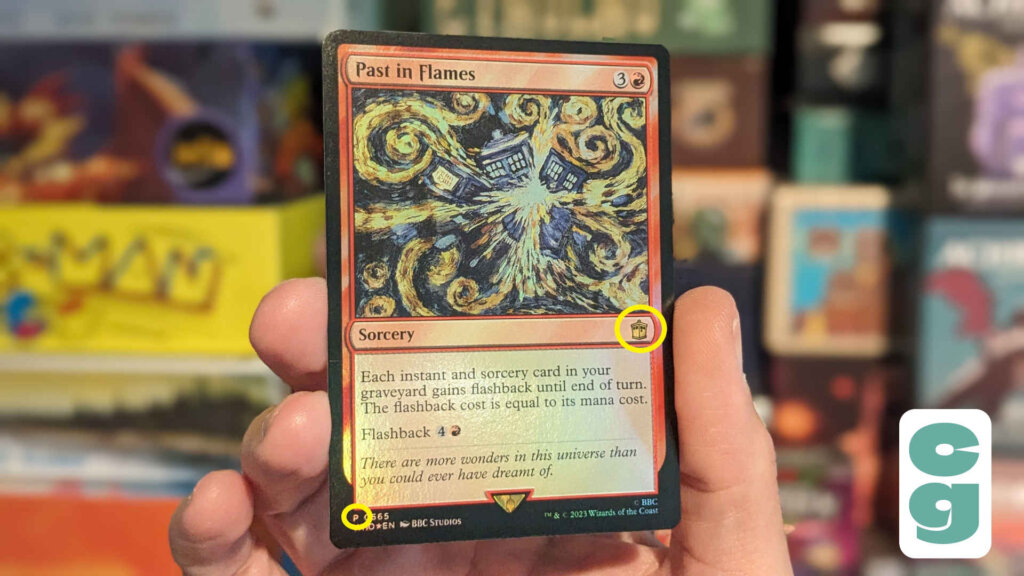
You won’t find Promo cards in normal packs; instead, they’re usually given away at events or won as prizes.
Promo cards can be cards of any rarity; they’re usually reprints of other cards in a set, and can be highly sought after. They’re identifiable thanks to their P rarity code; I’ve circled this and the set symbol above, but note that the set symbol itself may be a different colour on different promo cards.
8. Foil, Showcase and Alternate Art Cards – Any Rarity
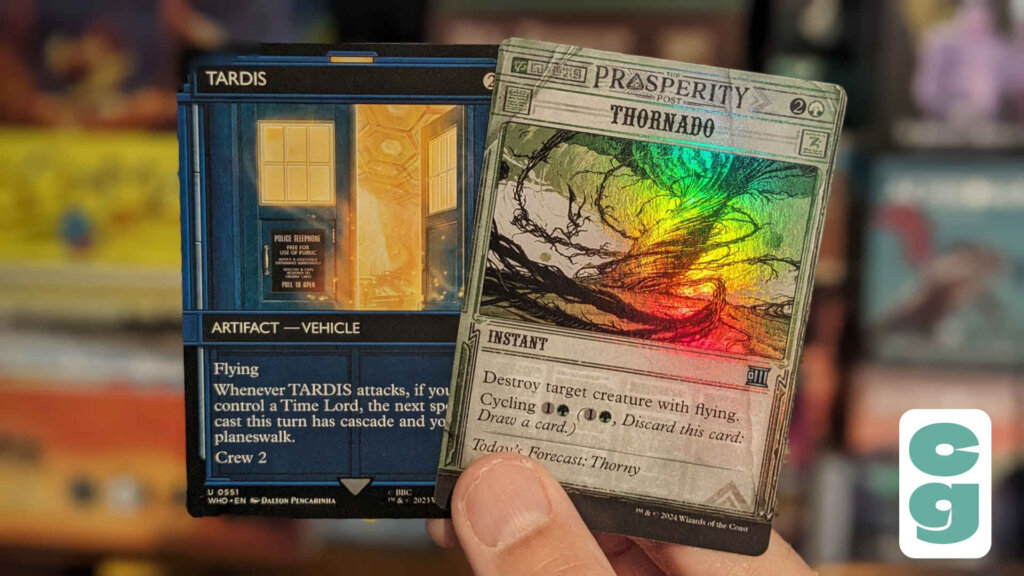
Foil cards are found at the rate of at least one per pack; these can be any rarity. Showcase cards are themed around the set they’re from; for example, Wild West newspaper-style art for Outlaws of Thunder Junction, or TARDIS frames for the Universes Beyond Doctor Who set (an example of each of those can be seen above).
Collector Boosters contain alternate art, foil and Showcase cards from any given set, but they’re also much pricier than Play Boosters. It’s worth noting that, as the name suggests, they really are packs for collectors, as (except in exceptionally rare instances and only in specific sets) you won’t find any mechanically unique cards in these booster packs; they’re intended to be the fanciest and most exciting looking cards, rather than cards you’ll actually play MTG with!
